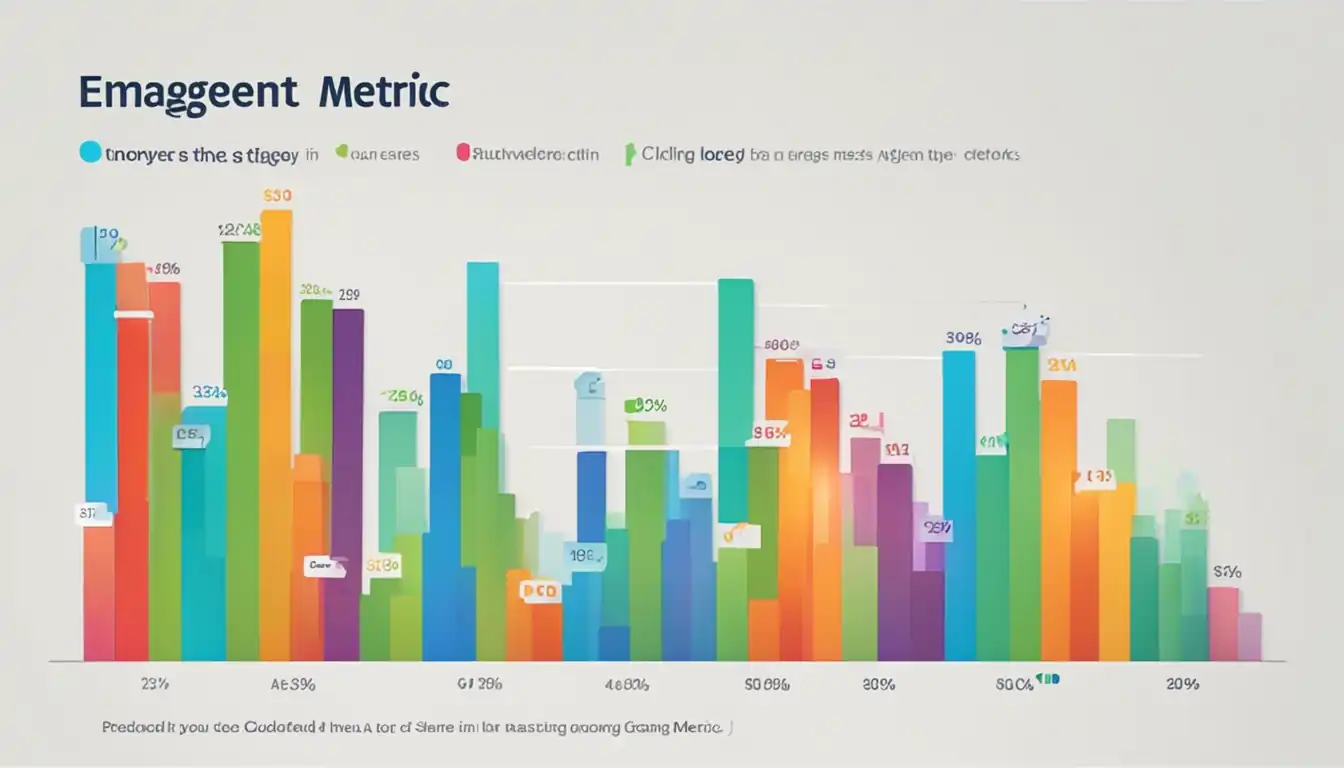Mastering SEO Content Engagement Metrics for Improved Performance

In the world of SEO, content engagement metrics play a crucial role in determining the success and visibility of your online presence. Understanding these metrics is key to optimizing your content for improved performance. By mastering SEO content engagement metrics, you can enhance your website's ranking and attract more organic traffic. Let's dive into how you can leverage these metrics to take your SEO game to the next level.
Understanding SEO Content Engagement Metrics
What Are Content Engagement Metrics?
Content engagement metrics are quantitative measurements that assess how users interact with your content. These metrics provide valuable insights into the effectiveness of your content in capturing and retaining audience attention. Common content engagement metrics include:
- Pageviews: The number of times a page has been viewed by users.
- Time on Page: The amount of time users spend on a specific page.
- Bounce Rate: The percentage of visitors who navigate away from the site after viewing only one page.
- Click-through Rate (CTR): The percentage of users who click on a link or call-to-action within the content.
Why They Matter in SEO
Content engagement metrics play a crucial role in determining the success of your SEO efforts. Here are some reasons why these metrics matter:
- User Experience: Engaging content leads to a positive user experience, which can result in higher rankings on search engine results pages (SERPs).
- Relevance: Metrics like time on page and bounce rate indicate how relevant and valuable your content is to users, which can impact your search engine rankings.
- Conversion Rates: Understanding how users engage with your content can help optimize it for better conversion rates, ultimately improving your SEO performance.
- Identifying Opportunities: By analyzing engagement metrics, you can identify areas for improvement and optimize your content strategy for better results.
In conclusion, mastering SEO content engagement metrics is essential for improving the performance of your website and driving organic traffic. By understanding these metrics and using them to inform your content strategy, you can enhance user experience, increase relevance, boost conversion rates, and identify opportunities for growth in your SEO efforts.
Key Metrics to Measure Content Success

In the world of SEO content engagement, it is essential to measure key metrics to determine the success of your efforts. By analyzing these metrics, you can gain valuable insights into how users interact with your content and make informed decisions on how to improve performance.
Time on Page and Its Insights
Time on page is a critical metric that indicates how long visitors spend consuming your content. A high average time on page suggests that users are engaged and finding value in your content. On the other hand, a low average time on page may indicate that your content is not resonating with your audience.
By analyzing time on page data, you can identify which pieces of content are performing well and which ones may need improvement. This insight can help you tailor future content to better meet the needs and interests of your target audience.
Bounce Rate and User Interest
Bounce rate measures the percentage of visitors who navigate away from your site after viewing only one page. A high bounce rate could indicate that users are not finding what they are looking for or that the content is not engaging enough to keep them on the site.
Understanding bounce rate can provide valuable insights into user interest and behavior. By analyzing this metric, you can identify areas for improvement in your content strategy, such as optimizing headlines, improving readability, or enhancing visual elements to increase user engagement.
By monitoring these key metrics and using them to inform your content strategy, you can master SEO content engagement and drive improved performance for your website.
Enhancing Visibility Through Effective Metrics Analysis
In the world of SEO content, understanding and analyzing key metrics is crucial for improving performance. By mastering these metrics, you can enhance visibility and engagement with your target audience.
The Role of Click-Through Rates (CTR)
Click-Through Rates (CTR) are a vital metric in determining how well your content is performing in search engine results pages. A high CTR indicates that your content is relevant and engaging to users, leading them to click through to your website. To improve CTR, focus on creating compelling meta titles and descriptions that entice users to click.
Social Shares and Audience Connection
Social shares are another important metric for measuring audience engagement with your content. When users share your content on social media platforms, it indicates that they find value in what you have to say. To increase social shares, create shareable content that resonates with your target audience and encourages them to spread the word.
By analyzing and optimizing these key metrics, you can effectively enhance visibility and engagement with your SEO content.
Strategies to Improve Your Content's SEO Through Engagement Metrics
Optimizing Content for Longer Read Times
Creating engaging content that keeps readers on your page for longer periods is crucial for improving SEO performance. Here are some strategies to optimize your content for longer read times:
- Craft Compelling Headlines: Grab the reader's attention with intriguing headlines that entice them to click and continue reading.
- Use Subheadings: Break up your content into easily digestible sections with clear subheadings to keep readers engaged.
- Include Visuals: Incorporate images, videos, and infographics to enhance the visual appeal of your content and maintain reader interest.
- Write Concisely: Keep your writing clear and concise to prevent readers from getting bored or overwhelmed.
By implementing these tactics, you can increase the time readers spend on your page, signaling to search engines that your content is valuable and relevant.
Reducing Bounce Rate with Targeted Content
A high bounce rate can negatively impact your SEO performance, as it indicates that visitors are leaving your site without engaging further. To reduce bounce rate and improve content engagement metrics, consider the following strategies:
- Understand Your Audience: Conduct thorough research to understand the needs and preferences of your target audience, then tailor your content to meet their expectations.
- Provide Value: Offer valuable information, insights, or solutions that address the interests or concerns of your audience.
- Internal Linking: Include internal links within your content to encourage visitors to explore other pages on your site and stay engaged.
- Optimize Page Load Speed: Ensure that your website loads quickly to prevent visitors from bouncing due to slow loading times.
By focusing on creating targeted, valuable content that resonates with your audience, you can effectively reduce bounce rate and improve overall engagement metrics for better SEO performance.
Advanced Techniques in Monitoring and Leveraging Engagement Data
In the world of SEO content, mastering engagement metrics is crucial for improving performance. By understanding how users interact with your content, you can make informed decisions to enhance its effectiveness and drive better results. Here are some advanced techniques for monitoring and leveraging engagement data.
Tools and Platforms for Tracking Engagement Metrics
Utilizing the right tools and platforms is essential for tracking engagement metrics effectively. Some popular options include:
- Google Analytics: A powerful tool that provides detailed insights into user behavior on your website.
- SEMrush: Offers a comprehensive suite of tools for tracking keyword rankings, backlinks, and more.
- Moz Pro: Provides valuable data on site performance, keyword research, and link building opportunities.
- Ahrefs: Known for its robust backlink analysis capabilities and competitive research tools.
By using these tools, you can gather valuable data on user engagement metrics such as bounce rate, time on page, pages per session, and more.
Interpreting Data for Strategic Decisions
Once you have collected data on engagement metrics, it's important to interpret it correctly to make strategic decisions. Here are some key points to consider:
- Bounce Rate: A high bounce rate may indicate that your content is not resonating with users. Consider optimizing your headlines, meta descriptions, or content structure to improve engagement.
- Time on Page: Longer time spent on a page generally indicates higher user interest. Analyze which pages have the highest time on page and identify common elements that contribute to user engagement.
- Pages Per Session: A high number of pages per session suggests that users are exploring your site further. Look for patterns in navigation paths and optimize internal linking to encourage deeper exploration.
By analyzing these metrics and making data-driven decisions, you can optimize your SEO content for improved performance and increased user engagement.
Conclusion
By implementing effective strategies to analyze and improve content engagement metrics, you can boost your website's visibility and drive more traffic. Remember, optimizing for longer read times, reducing bounce rates, and leveraging tools for tracking engagement data are essential steps in mastering SEO content engagement metrics. Stay informed, stay engaged, and watch your SEO performance soar to new heights.